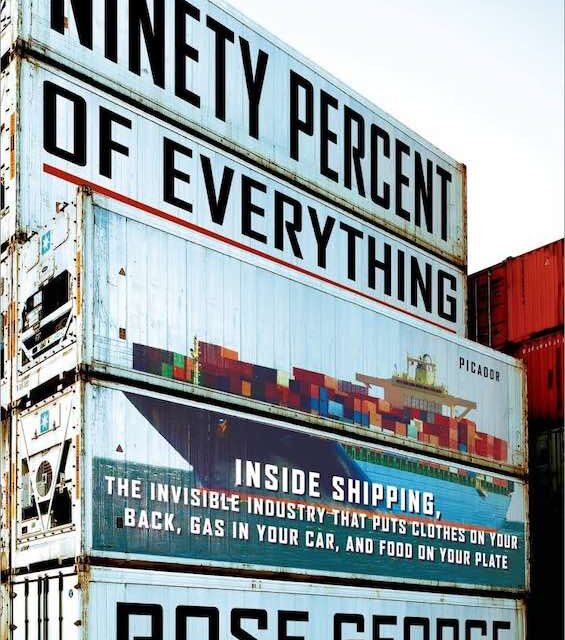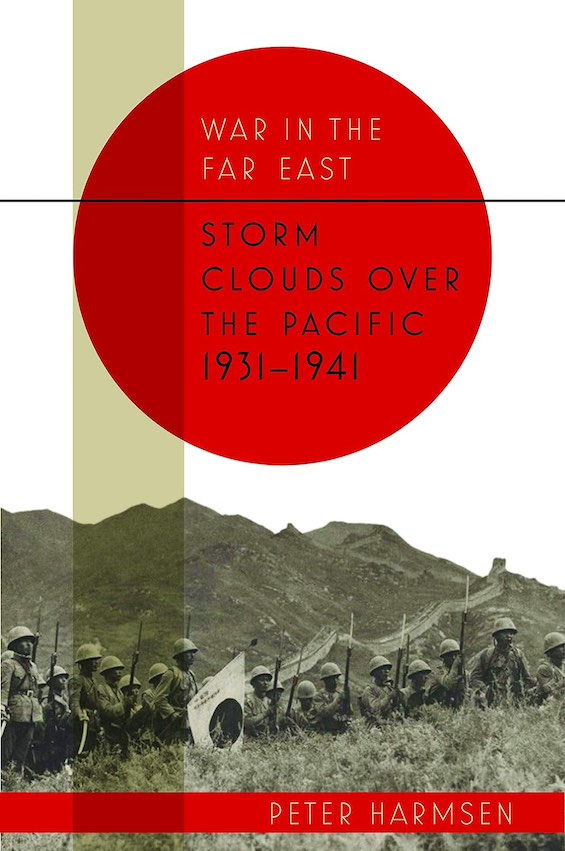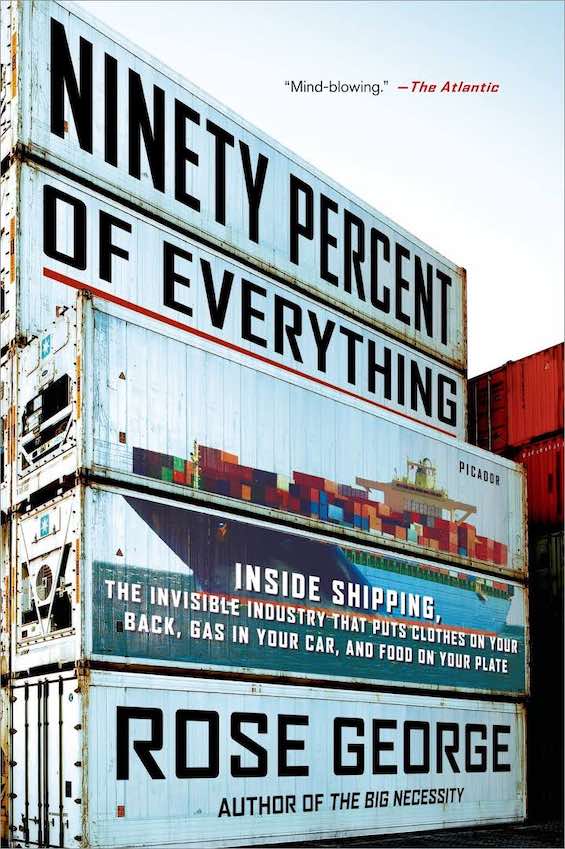
Globalization is puzzling. That iPhone you may have at hand contains parts manufactured in forty-three countries on six continents—and that doesn’t even count the raw materials. But how did all that stuff get to the factory in China or India that fit them together into your phone? Of course, trucks or trains played a part. But it’s a small one. In fact, it’s a certainty that nearly everything in that device came by ship for most of the length of its journey. And it was a ship that brought it across the ocean to a port somewhere near you. Yes, globalization today is all about shipping. And that’s the subject of the endlessly fascinating account by journalist Rose George in Ninety Percent of Everything.
Estimated reading time: 6 minutes
An industry of vast proportions
Despite its importance in our lives, few of us know much about the shipping industry. What we do know is likely limited to the inconvenience we suffered when the COVID-19 pandemic set off a supply chain crisis. Then, we read about container ships stacked up in ports waiting to be unloaded. But few accounts in the news media gave us any hint of the size of the shipping market. Rose George corrects that failure.
In her introduction, she reports that “there are more than one hundred thousand ships at sea carrying all the solids, liquids, and gases that we need to live. Only six thousand are container vessels . . . but they make up for this small proportion by their dizzying capacity. The biggest container ship can carry fifteen thousand boxes.” And “there are at least twenty million containers crossing the world now.” Imagine that: a single one of those forty-foot boxes can hold 60,000 pounds worth of stuff. That’s a lot of stuff on a single ship.
As a result, “Shipping is so cheap that it makes more financial sense for Scottish cod to be sent ten thousand miles to China to be filleted, then sent back to Scottish shops and restaurants, than to pay Scottish filleters. A Scottish newspaper called this practice ‘madness,’ but actually it’s just shipping.” And that’s how the stuff we buy gets to us for a pittance. “A sweater can now travel three thousand miles for 2.5 cents; it costs 1 cent to send a can of beer.” There it is: globalization at work today.
Ninety Percent of Everything: Inside Shipping, The Invisible Industry That Puts Clothes on Your Back, Gas in Your Car, and Food on Your Plate by Rose George (2013) 304 pages ★★★★☆
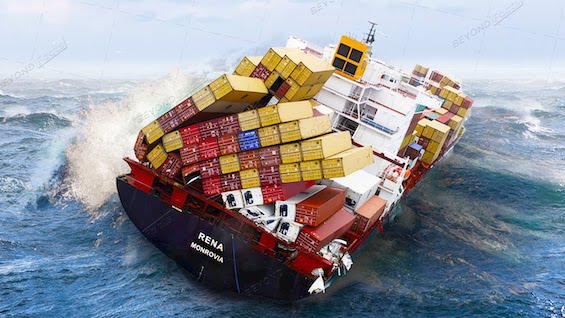
Empty containers eastward, full ones back
To gain first-hand knowledge of how shipping enables globalization today, George gained permission from the Danish owners of the Maersk line to travel aboard one of its ships on its month-long journey from England to Southeast Asia. Her final destination is “Laem Chabang, Thailand, where she will turn around and come back.” Empty containers eastward, full ones on the trip back. The vessel in question was the Maersk Kendal, “a midsized ship. Her deck is only three football fields long when the biggest decks now stretch for four.” Still, “at her most laden, Kendal carries 6,188 boring TEUs, or twenty-foot-equivalent unit containers.” In other words, she can carry a whole lot of stuff back to the shopaholics of the Western world.
A polyglot ship
Based in a comfortable suite in the upper reaches of the ship, George shared meals in both the officers’ quarters higher up and the crew’s down below. Largely in silence with the taciturn officers, in spirited conversation with the crew. (Officers are considered to be separate, not part of the crew.) “There are twenty men and one woman—Pinky, the cook—employed on Kendal. . . The officers are mixed [eight men, five nationalities] but the crew are all Filipino. This is to be expected. Filipinos make up a third of all crews worldwide. A quarter of a million of them are at sea.”
Diving into the issues
As she describes the course of Kendal’s eastward journey, step by step, George uses each chapter along the way to dive into one or another of the issues the industry confronts today.
- The shameful exploitation of powerless seafarers. As the author notes, “For most of history, the seaman’s life has been one of adventure, perhaps, but also of weevils, awful food, terrible weather, press gangs, pirates, constantly possible drowning or injury.” It’s a little different today, but the danger, the boredom, and the exploitation by crooked shipowners and middlemen plague seafarers all across the world today.
- Corporate ownership hidden behind layers of shell companies and “flagged out” at open registries. “Now 68 percent of ships fly a flag that does not belong to the country their owner is from or resident in.” Why? For example, “it costs 2.7 times as much to run an American-registered ship.”
- Unenforced (and often unenforceable) international maritime conventions designed to protect seafarers and the environment and combat crime.
- Shipwrecks. “More than two ships are lost every week,” George reports. And “UNESCO estimates—because it can’t do otherwise—that throughout the oceans there are three million ships or bits of ships on the seabed, beached or abandoned.”
- Punishing storms that can rock and even upend fully laden container ships weighing in at as much as 200,000 metric tons.
- Piracy, largely in the Arabian Gulf off the coast of Somalia.
- And death onboard. (“Seafarer fatalities are still ten times those of land-based occupations.”)
What would it take to eliminate such problems? “International conventions that can actually be enforced and flag states that can be compelled into good behavior. Oversight, governance, fair play. All the things expected on land that dissolve twelve miles out, in open seas.” Yet the prospects for any of that are slim. Because this is the way globalization works today.
About the author
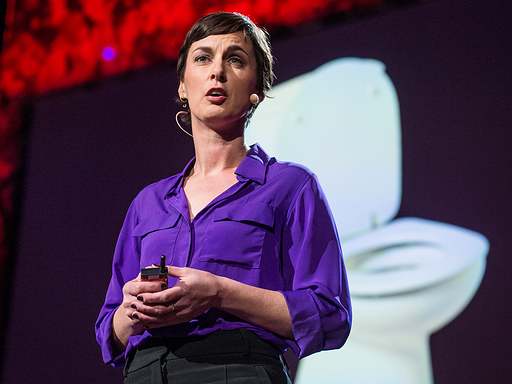
Rose George is a British journalist who began writing as an intern at the US magazine The Nation in 1994. She has gone on to write for leading British newspapers and other publications, work as a war correspondent, and edit a London magazine. George is the author of five nonfiction books. She holds a First-Class Degree in Modern Languages from the University of Oxford and an MA in international politics from the University of Pennsylvania.
For related reading
This is one of The 21 best books of 2023.
You might also care to check out:
- My 10 favorite books about business history
- Gaining a global perspective on the world around us
- 20 top nonfiction books about history
And you can always find my most popular reviews, and the most recent ones, on the Home Page.

